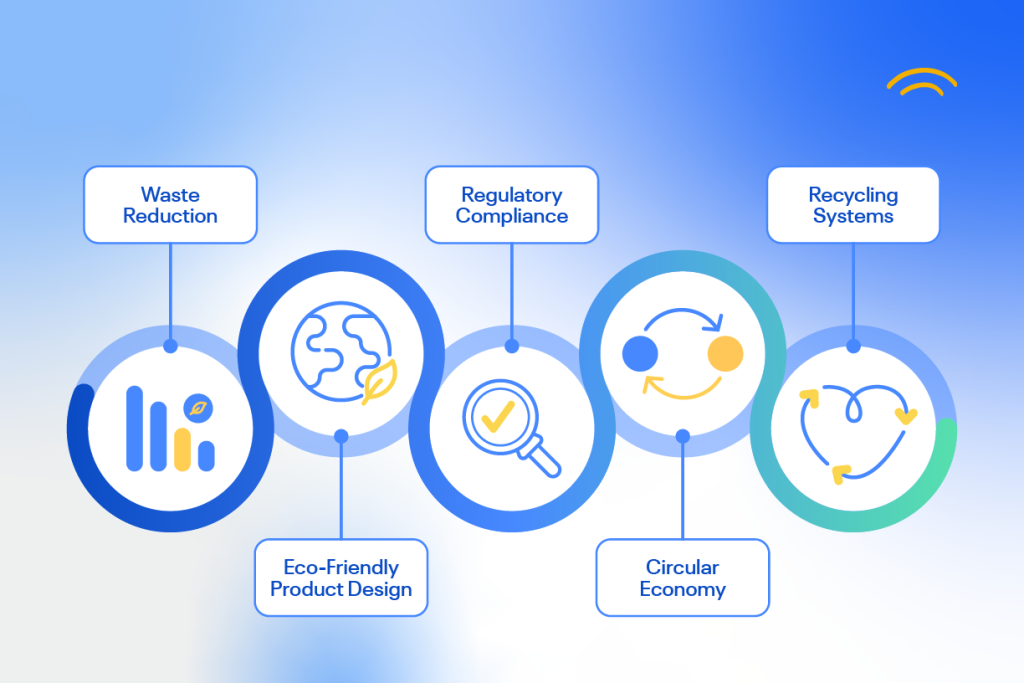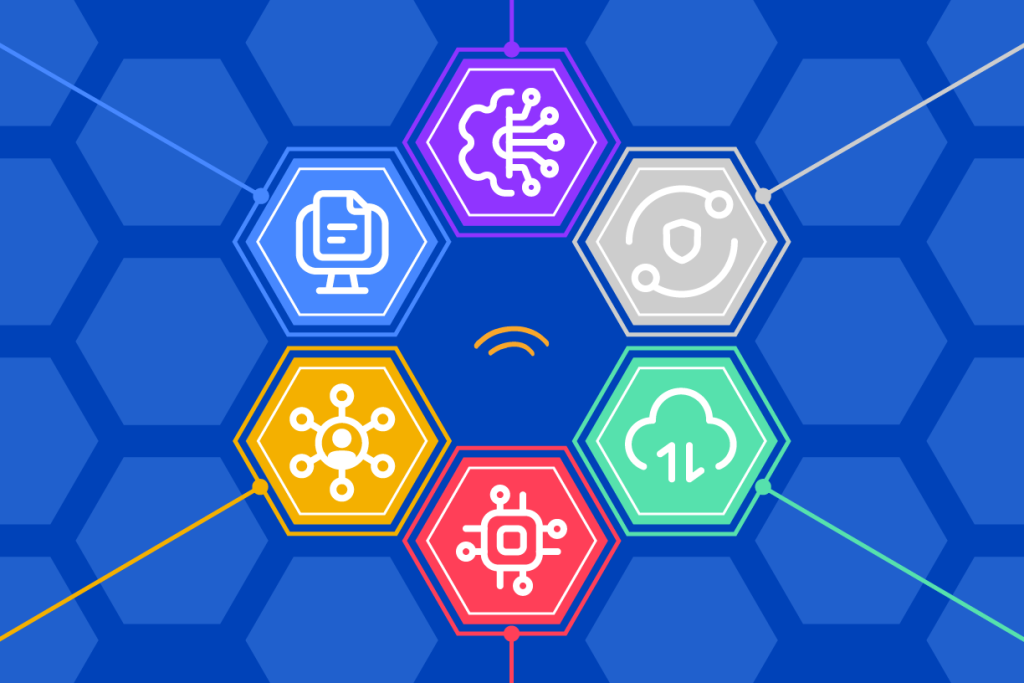
At Dayrize, Laura Pillari uses her background in mechanical engineering and climate tech to turn complex sustainability challenges into smart, data-driven solutions. In this interview, we explore Laura’s journey into impact innovation, how AI is reshaping risk and sustainability analytics, and what’s next for DaySI—our intelligent engine powering faster, smarter decisions across supply chains.
Can you share what inspired your journey into technology-driven innovation and how your career evolved to your current role as Product Manager at Dayrize?
My career has been kind of all over the place. I’m a mechanical engineer by training. I studied energy technologies—things like renewable energy, but also conventional and energy theory. That got me hooked on sustainability because energy has always been at the core of many of the world’s sustainability challenges.
My career has gone from the energy industry into sustainable technologies because I wanted to be more at the forefront of change. I’ve been a business analyst, financial analyst, and worked in climate finance and renewable chemical technology. All these roles come together because over the years—not that many, just a little over a decade—it became clear that technology, particularly software and data technology, is essential.
(Quick side note: I don’t love the word “technology” because it’s so broad. It includes everything from fire and the wheel to rockets, cars, and software. As a mechanical engineer, I’m drawn to physical tech. But still, it’s clear that physical and data-centered technology can’t be separated.)
To make meaningful changes in the physical world—whether for climate, ecosystems, biodiversity, oceans, or food systems—we need that intersection of physical and data-driven tech. That’s why I became more and more interested in how software and data can help us move faster. The size of the problem is huge, and if we don’t use computers to accelerate our work, we’ll never get to where we need to be. That’s my interest in these types of solutions and in Dayrize as a data-driven tech solution for real-world problems.
In your view, how is AI shaping the future of Data Analytics, and what opportunities or challenges do you foresee in this space?
We’re all learning about AI every day. Anyone who claims to be a real expert is probably either lying or deluded—it’s moving so fast, and very few people truly understand its full capabilities. As a global and business community, we’re figuring it out as we go, and that’s what we’re doing.
In my current understanding, AI represents speed—and if done right, also accuracy. We can handle larger volumes of data, process them faster into usable, actionable insight, and spend more time on actions that create real change—growing businesses, improving resilience, being more nimble.
We can spend less time on number-crunching and tasks human analysts typically do. So, it’s really about speed to insight, handling more data, and combining different data types in new ways that weren’t previously possible at scale. At Dayrize, this allows us to zoom into granular insights—like individual consumer products—and zoom out quickly to see the big picture using the same detailed data.
One of the main challenges we’ve seen in the last 6 to 12 months is the learning curve and trust-building around AI solutions. Using AI comes with responsibility—to use it where it adds value, not just as a broad brush for every problem. That thoughtfulness is something we’re working hard to embed, and it’s important to bring clients along on that journey so they understand where we’re using AI responsibly.
DaySI has been gaining momentum recently. Can you walk us through some of the latest developments and key milestones the team has achieved so far?
“DaySI” is our affectionate name for our impact and risk measurement tool. It’s the algorithm that calculates impact at the product level and aggregates that up for higher-level insights. Paired with that scientific methodology, DaySI has an AI “brain” that bridges data gaps, learns and improves, and enables speed and scale.
DaySI gets you from having no data to identifying actionable opportunities—to improve products, reduce risk, grow sales, and lower environmental impact. We’re especially excited about DaySI’s continuous growth. It’s built on a 30 million product foundation and is always growing, always integrating new data. We’re also constantly looking for ways to improve the accuracy of the assessments and insights that come out of it.
Once DaySI is fully realized, what can businesses expect in terms of how it will transform the way they assess and manage sustainability-related risks and impacts?
It might be helpful to mention some features, but I’ll paint a picture. This idea came from my own experience using ChatGPT—I built myself a “best friend at work GPT” that stores our strategy documents, methodology, product info, and market data. I use it as a brainstorming partner or to structure difficult problems.
Now imagine taking that a step further. Imagine a colleague who works in supply chain, procurement, sustainability, or compliance—any role dealing with product-driven impacts or risks. This colleague is:
- An expert in sustainability
- Knows every compliance rule
- Understands your entire supply chain in detail
- Is great at business analytics and communication
You can ask them:
- What’s our exposure to supply disruptions this year?
- Are we ready for new extended producer responsibility (EPR) regulations?
- What’s the cost of compliance?
- How do we avoid reputational risks like our competitor faced?
- Where should we push suppliers for more transparency?
DaySI can deliver that kind of insight—data-supported answers that help you act on what matters most. It becomes a central, robust source of truth across the organization.
With the new EPR dashboard launched, how does it help companies track and report on EPR requirements?
EPR regulations are complex—they vary by region and are driven by product-level details like materials and even design (e.g., are components glued together?).
Our EPR dashboard helps companies understand:
- What obligations they face
- What the associated costs or fees might be
- Where there are opportunities to reduce penalties or improve readiness
- Where critical data gaps exist
It brings clarity to a very fragmented regulatory landscape.
How does the new Tariff Risk feature help businesses navigate emerging trade and regulatory risks?
Tariffs are another area of huge complexity. Understanding them requires detailed knowledge of your products, materials, sourcing countries, and how all that varies by geography and product category. Rules can also change quickly.
This is where AI really helps—with speed, agility, and scale. It’s too much for a human to process manually. Dayrize can rapidly assess tariff risks for specific companies and product sets, highlight major issues, and suggest what actions to take.
What trends and innovations do you believe will define the future of risk and impact analytics in business?
I keep referring back to agility. Change is going to be constant—that’s the cliché, but it’s true. It won’t be about solving a tariff problem once and moving on. Everything will keep changing, and businesses will need to work with real-time data and move fast.
That adaptability will be critical for any solution with long-term value. Otherwise, tools and data will go obsolete within weeks or months.
Are there any upcoming launches you’re especially excited about?
What I’m most excited about is the ongoing development of our advanced supply chain modeling—what we call the “virtual supply chain.”
We’re expanding our big data capabilities and combining them with powerful AI. This supercharges everything we do. Every feature we’ve discussed—regulatory compliance, supply chain risk, etc.—will move faster and become more intelligent.
Traditionally, you’d collect data from suppliers via surveys, which is time-consuming and becomes outdated quickly. The old model also involved separate tools for specific use cases.
Where we’re going is toward a unified system that models your operations virtually, reveals insights you couldn’t get from direct data collection, brings together diverse data sources, and uses machine learning to highlight potential risks or areas worth deeper investigation.
Perfect data doesn’t exist. But the only way to operate at the speed and scale required today is with this kind of infrastructure.
What advice would you give to companies struggling to scale their impact measurements?
It’s much better to have something than nothing. We can help you get started quickly, giving you a foundation of insights to work from.
This complements anything you’re already doing—supplier engagement, data collection, compliance planning. Our approach helps prioritize and accelerate those efforts so you can move forward effectively.
To keep up to date with our latest releases and get to know the team behind Dayrize, subscribe to our updates below and follow us on LinkedIn.

